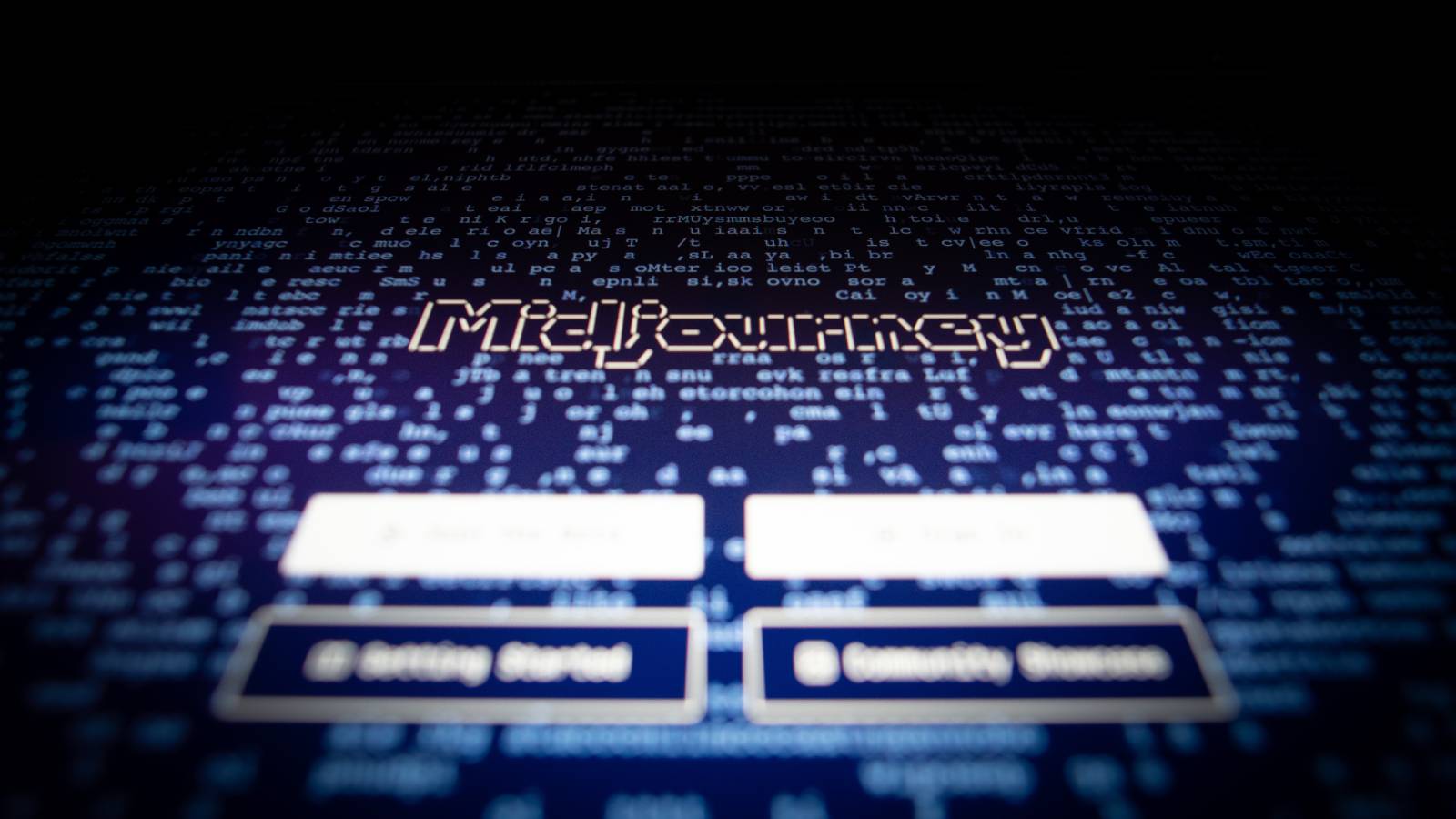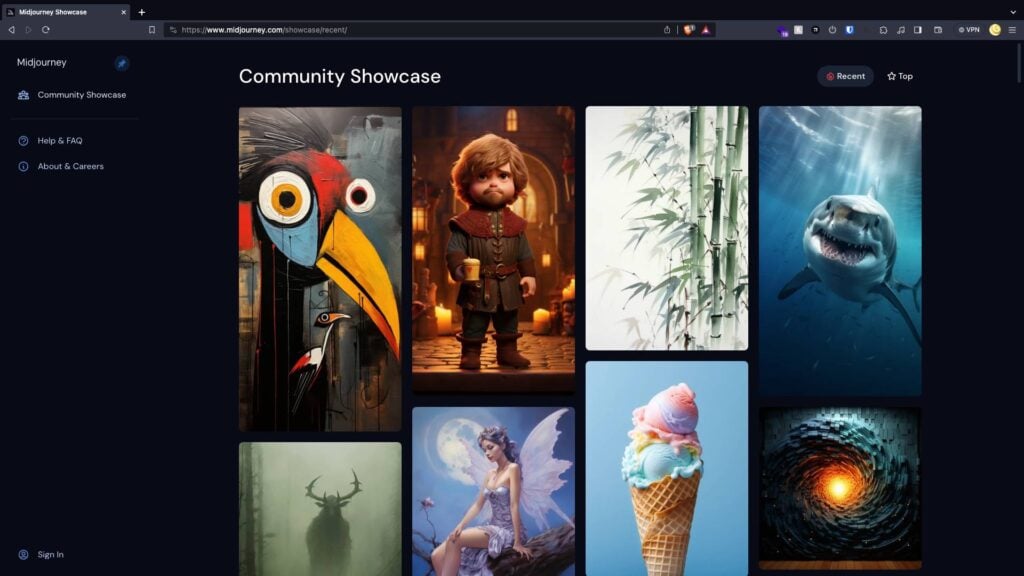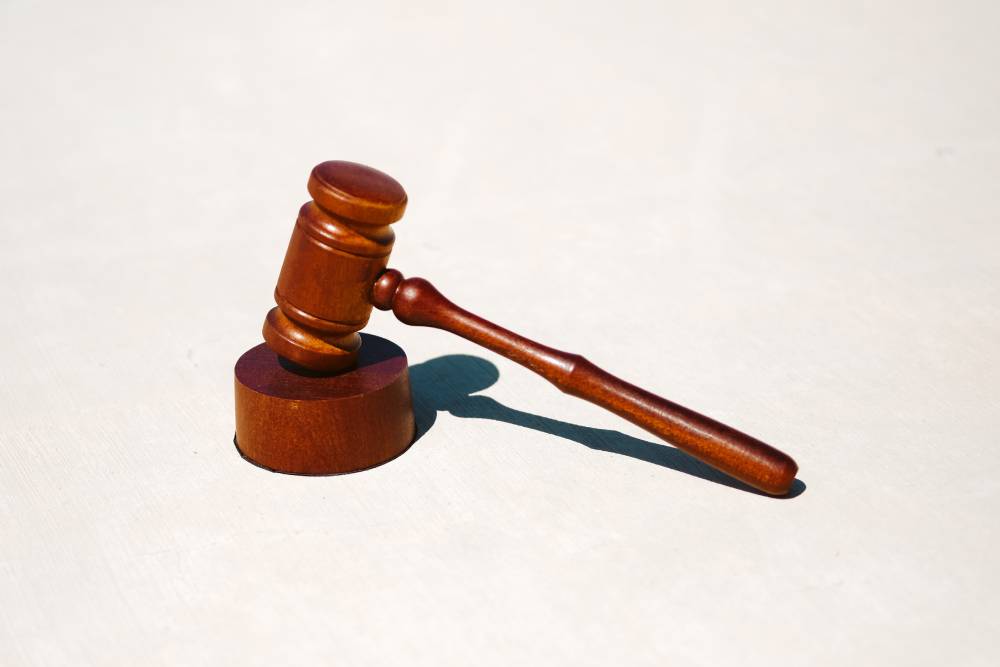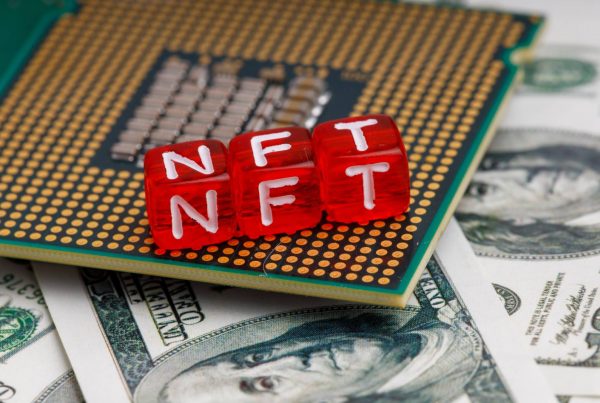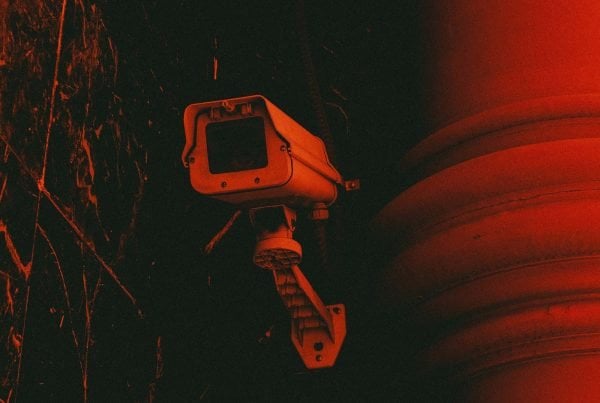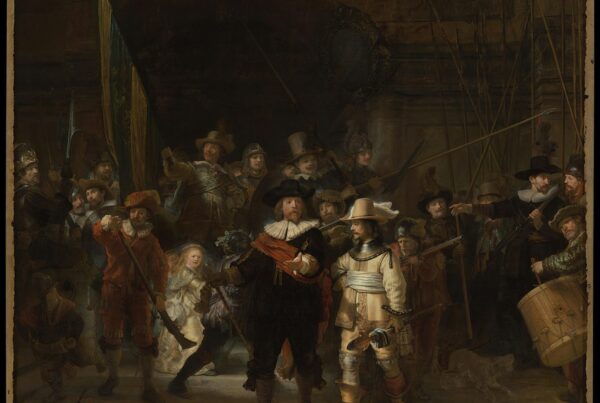Table of Contents
1. Introduction to Midjourney AI
Midjourney is an innovative exploration into the realm of artificial intelligence, specifically focusing on generative capabilities. Hailing from San Francisco, this independent research lab, Midjourney, Inc., has rapidly evolved into a front-runner in AI-driven image generation. Unlike many AI labs that are funded by large corporations or venture capital, Midjourney’s journey has been primarily self-driven, with a relatively modest team of 11 dedicated staff members. The guiding force behind this venture is David Holz, the same innovative mind that co-founded Leap Motion. Their primary offering is a unique tool that generates visual art based on textual prompts, drawing comparisons to other prominent AI tools like OpenAI’s DALL-E and Stability AI’s Stable Diffusion.
The key features of Midjourney include:
- Generative Capabilities: Midjourney AI takes a user’s textual prompt and translates it into visually captivating artwork.
- Open Beta: As of July 12, 2022, Midjourney entered its open beta phase, inviting users to experience its capabilities first-hand.
- Profitability: Within a short span of time, David Holz announced the company’s profitability in August 2022, a notable achievement in the competitive AI landscape.
- Accessibility: The main mode of interaction with Midjourney AI is through Discord bot commands, making the creation process streamlined and user-friendly.
2. History of Midjourney
The inception of Midjourney, Inc. is a testament to the spirit of innovation. Based in the tech hub of San Francisco, California, David Holz, co-founder of the pioneering Leap Motion, embarked on a new venture to revolutionise the digital art landscape. But the journey wasn’t an overnight success. Before opening its beta phase to the public in July 2022, the team made a unique move. On March 14, 2022, they launched a Discord server and made a call-to-action: they requested users to post high-quality photographs on platforms like Twitter and Reddit. The objective? To train the Midjourney system.
Chronology of Events:
- Founding: Midjourney, Inc. was established by David Holz, branching out after his success with Leap Motion.
- Discord Server Launch: On March 14, 2022, the lab ventured into community engagement by launching a Discord server, soliciting high-resolution images from the public. These images played a pivotal role in refining the system’s training process.
- Open Beta Launch: Midjourney’s image generation platform officially opened its doors to the public on July 12, 2022. This open beta stage was pivotal in gathering user feedback and refining the AI’s capabilities.
The commitment to consistent growth and refinement is evident in Midjourney’s timeline. From the establishment of the company to the strategic decisions leading up to the open beta launch, Midjourney’s history is a blend of innovation, community engagement, and technological evolution.
3. Evolution of Model Versions
The prowess of any AI tool is often linked to the sophistication and evolution of its underlying models. Midjourney, staying true to its commitment to innovation, has consistently launched upgraded versions of its generative algorithm. With each iteration, users witnessed enhanced capabilities, increased accuracy, and richer visual outputs.
Here’s a detailed look at Midjourney’s Model Versions:
- Version 1 (V1): The foundation was laid in February 2022. This was the initial model that set the stage for future innovations.
- Version 2 (V2): Released on April 12, 2022, this version came with improved functionalities, taking into account user feedback and early observations.
- Version 3 (V3): Launched on July 25, 2022, the third iteration aimed to correct inconsistencies observed in V2.
- Alpha Iterations: Notably, by November 5, 2022, the alpha version of V4 was introduced to users, followed by the alpha of V5 on March 15, 2023. These alpha versions served as preliminary models, often rolled out to gauge user reactions and gather feedback.
- Stylisation and Improvements: Model 5.1 showcased a distinct feature; it was more ‘opinionated’, meaning it added its own touch of stylization to the images. In contrast, the 5.1 RAW model was designed to interpret literal prompts more effectively. With the release of Version 5.2, users saw a marked improvement in image quality.
- Special Models:
- Beta: Released on August 22, 2022, this version might have been a test run for broader features.
- Test/testp: Rolled out on August 28, 2022, the purpose remains speculative, possibly another feature test.
- Niji: A collaboration between Midjourney and Spellbrush, Niji, released on December 20, 2022, was tuned specifically for anime and illustrative styles. This was further upgraded to Niji 5 on April 2, 2023.
This consistent refinement and the introduction of specialised models underline Midjourney’s commitment to staying at the forefront of generative art AI.
4. Functionality & Accessibility
Understanding how an AI tool functions is paramount to leveraging its full potential. Midjourney, while possessing a wide array of features, ensures that its usability remains straightforward and intuitive for its users.
Discord Integration:
Midjourney has strategically chosen Discord, a widely-used communication platform, to introduce its capabilities. This move has made it accessible to a vast audience.
- Bot Command:
- Command Usage: To generate images using Midjourney, users simply have to use the
/imaginecommand followed by a prompt. - Output: Once the command is executed, the bot offers a set of four distinct images based on the given prompt.
- Image Upscaling: Users can then select any image(s) from this set to upscale, enhancing the image’s resolution and clarity.
- Command Usage: To generate images using Midjourney, users simply have to use the
- Direct Messaging and Third-Party Servers: While the primary access point is their official Discord server, users can also directly message the bot or invite it to third-party servers, diversifying its application.
Brief Guide to Using Midjourney Bot on Discord
- Log In: Access the bot via Discord. Make sure you have a verified account.
- Subscription: Choose a plan on Midjourney.com/account.
- Join the Server: Go to Discord, tap ‘+’, and join using http://discord.gg/midjourney.
- Find a Channel: Use the bot in channels titled general-# or newbie-#.
- Use /imagine: Start with ‘/imagine prompt:’, describe your image, and send.
- Accept T&Cs: Agree to the bot’s terms before image creation.
- Image Generation: The bot will produce four images using your prompt within a minute.
- Modify Your Image: Use the various buttons (like ‘U’, 🔄, and V) for upscaling and variations.
- Enhance: After selecting an image, use tools like ‘Zoom Out’ and ‘Pan’ for adjustments.
- Save: Click on the image, then right-click and choose ‘Save image’.
Need Help? Use the /help or /ask commands or visit the #member-support channel. Or check out the quick start guides.
Web Interface:
Beyond Discord, there is an indication that Midjourney is in the process of developing a web interface. This move would significantly broaden its accessibility and offer users a more traditional platform to generate art.
User-Oriented Design:
The decision to make the AI tool accessible via popular platforms such as Discord underscores Midjourney’s commitment to user-centric design. It seeks to ensure that both novices and experts can engage with the tool with ease.
Midjourney AI Guides
- https://zapier.com/blog/how-to-use-midjourney/
- https://www.youtube.com/watch?v=90tXPbyRGS8
- https://bootcamp.uxdesign.cc/the-midjourney-cheat-sheet-v5-54b5fd92d2da
- https://tipseason.com/midjourney-cheatsheet/
- https://levelup.gitconnected.com/the-ultimate-cheat-codes-to-midjourney-prompting-part-1-ed44aca3cab6
5. Uses of Midjourney in the Art and Business World
Midjourney, with its innovative application, is not merely a tool for leisurely art creation. Instead, it has found profound applications within the professional realm, from individual artists to large-scale industries.
Artists as Collaborators, Not Competitors:
- Rapid Prototyping: David Holz, the founder of Midjourney, envisions artists using this tool for rapid prototyping. This means artists can quickly generate a multitude of concepts, presenting them to clients before diving deep into their final creations. This process significantly reduces the time and effort invested in initial designs.
- Controversies and Copyright Concerns: Despite the benefits, some sections of the artist community have raised concerns. They argue that tools like Midjourney might devalue original art by sourcing from existing pieces for training. Midjourney’s response is a DMCA takedown policy, which allows artists to request the removal of their work if they find infringements.
Advertising’s New Frontier:
- Original Content Creation: The advertising sector, always on the lookout for innovative methods to engage audiences, has been quick to adopt AI tools like Midjourney. The ability to craft unique content on-the-fly can revolutionise advertising campaigns.
- Tailored Advertising: With AI-driven platforms, there’s potential for ads customised to individual preferences, elevating the user experience while increasing engagement rates.
- Efficiency in E-Commerce: Another realm ripe for disruption is e-commerce. With the capability to rapidly generate creative content, advertisements can become more dynamic and responsive to market needs.
Architectural Inspirations:
- Mood Boards Creation: Architects, in their initial project stages, often seek inspiration. Instead of trawling through existing online repositories, they can now use Midjourney to generate mood boards tailored to their visions, making the ideation process more organic and intuitive.
By traversing various industries and professions, Midjourney is redefining how professionals approach their creative processes. From artists to advertisers, this tool offers a unique blend of efficiency and innovation.
6. Notable Usage and Controversies Surrounding Midjourney
With every innovative tool comes a set of discussions, debates, and controversies, and Midjourney is no exception. The platform has seen a range of use cases, from professional media outlets to individual creators, each leaving its mark on the discourse surrounding AI-generated art.
Media Houses and AI Integration:
- The Economist’s Stance: An exemplification of Midjourney’s reach into professional media can be seen when the esteemed British magazine, The Economist, integrated an AI-generated cover for their June 2022 issue. This not only showcased the tool’s capabilities but also sparked discussions on the integration of AI in conventional media.
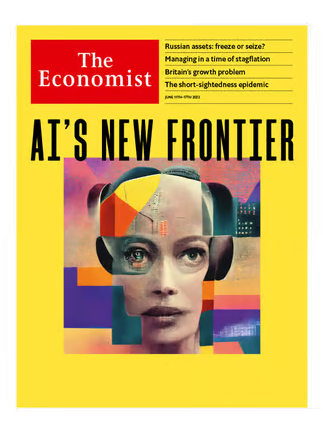
The Economist – AI’s New Frontier
- Italy’s Artistic Exploration: Leading the artistic frontier, Italy’s renowned newspaper, Corriere della Sera, published a comic crafted with Midjourney. The brain behind this integration was writer Vanni Santoni, further emphasising the tool’s versatility across media forms.
- Last Week Tonight’s Segment: Highlighting the tool’s popularity and relevance, John Oliver’s ‘Last Week Tonight’ dedicated a 10-minute segment solely on Midjourney in August 2022, bringing the tool’s implications to a broader audience.
Art Competitions and AI’s Place:
- Théâtre d’Opéra Spatial’s Victory: An image dubbed ‘Théâtre d’Opéra Spatial’, crafted using Midjourney, clinched the first place at the 2022 Colorado State Fair’s digital art competition. This win sparked debates on AI’s role in art competitions, with some viewing it as a deserving win and others as a controversial choice.

Wikipedia – Théâtre D’opéra Spatial
The Children’s Book Conundrum:
- AI’s Rapid Illustration: December 2022 witnessed the birth of ‘Alice and Sparkle’, a children’s book where all illustrations were Midjourney’s creations. The rapidity with which the book was crafted – merely a weekend – brought forth both awe and criticism. The core of the debate rested on AI tools being trained on existing artists’ works without explicit consent.
The Wave of Viral AI-Generated Photos:
- Realism Peaks: 2023 marked the era when AI-based image generators reached an unprecedented realism level. Midjourney’s creations, such as the viral photo of Pope Francis in a puffer jacket or the fictional arrest of Donald Trump, became the talk of the town, reiterating AI’s powerful influence on modern media.
7. Content Moderation and Censorship in Midjourney
Navigating the labyrinth of user-generated content, Midjourney has been compelled to address the challenges of content moderation. This sphere brings forward concerns about censorship, bias, and the sensitive balance of ensuring ethical use of technology.
Initial Mechanism: Banned Words System:
- Framework and Limitations: Prior to May 2023, Midjourney operated using a ‘banned words‘ system. This rudimentary approach prevented the creation of imagery tied to explicit themes—be it violent or sexual. Furthermore, it banned names of specific political or religious figures. However, this strategy was not without its controversies. Critics pinpointed it as an act of censorship, curtailing the scope of artistic expression.
Transition to AI-Powered Moderation:
- Advancements and Nuance: Recognising the limitations of the former system, Midjourney, post-May 2023, adopted an ‘AI-powered’ moderation mechanism. This transition marked a significant leap in ensuring content accuracy and sensitivity. Unlike its predecessor, this system analysed user prompts holistically, allowing a more contextual interpretation.
- Balancing Freedom and Responsibility: With the new AI-moderation, users can, for instance, prompt the AI for a portrait of “Xi Jinping”. However, it judiciously prevents the generation of controversial images, shielding the platform from potential misuse.
Benefits and Ethical Concerns:
- Upholding Ethical Standards: While the AI-powered moderation offers a more nuanced approach to content, it also upholds the ethical standards of the platform, ensuring that images generated align with broader societal values and don’t instigate controversies.
- User Perspective: Users, on the whole, have welcomed the move towards AI moderation, citing its ability to allow broader creative freedom while ensuring responsibility.
In this section, we have delved into the evolution of content moderation strategies employed by Midjourney. The balance between artistic freedom and ethical responsibility remains a challenging terrain, but Midjourney’s initiatives reflect a commitment to navigate this responsibly.
8. Litigation With AI Art
Legal complexities often intertwine with technological advancements. With the rise of Midjourney and similar platforms, a notable legal confrontation emerged, bringing to the forefront issues concerning copyright, AI, and the rights of artists.
Initiation of the Lawsuit:
- The Plaintiffs: On January 13, 2023, three artists—Sarah Andersen, Kelly McKernan, and Karla Ortiz—voiced their concerns in the form of a copyright infringement lawsuit. These artists, with distinct styles and substantial recognition in the artistic community, acted as the vanguards of a broader group of artists feeling threatened by AI advancements.
- The Defendants: The lawsuit targeted Stability AI, Midjourney, and DeviantArt. The core contention revolved around the alleged training of AI tools on a staggering five billion images from the web, executed without seeking consent from the original artists.
Nature of the Allegations:
- Unauthorised Training: The crux of the legal confrontation centred on the alleged use of artists’ original work to train AI models. This unauthorised “training” was perceived as a direct infringement on copyright laws, sidelining the creative rights of countless artists.
- Legal Representation: Spearheading the legal challenge was attorney Matthew Butterick in collaboration with the Joseph Saveri Law Firm. Notably, this legal team was also confronting tech giants like Microsoft, GitHub, and OpenAI in parallel litigations.
Court’s Response:
- Partial Dismissal: By July 2023, the judicial response came in the form of U.S. District Judge William Orrick’s inclination to dismiss a majority of the lawsuit’s components. However, an olive branch was extended to the plaintiffs, allowing them to file an amended complaint, suggesting that some of their concerns were valid and could be readdressed.
Implications for the Tech Industry:
- Precedent Setting: Such lawsuits, irrespective of their outcomes, set a significant precedent in the tech industry, especially in the realm of AI. They underscore the pressing need to ensure that technological advancements respect artistic and copyright boundaries.
- Future Challenges: This lawsuit is a harbinger of potential future challenges that tech companies might face. Striking a balance between innovation and ethical considerations will be paramount.
This litigation section throws light on the intricate dance between evolving technology, artists’ rights, and the intricate maze of legal jurisdictions. While the final outcome of this lawsuit remains to be seen, it undeniably marks a pivotal chapter in the history of AI and artistic expression.
The Rise and Evolution of Midjourney AI: A Deep Dive into Digital Creation
In the bustling landscape of AI-driven art, Midjourney AI emerges as a transformative force. Born in the tech crucible of San Francisco, it’s the brainchild of an innovative team led by the visionary, David Holz. This generative AI tool, evolving swiftly through multiple versions, provides an intuitive interface primarily through Discord, allowing users to bring their imaginative prompts to vivid life. While many artists view Midjourney as a tool for rapid prototyping, debates around its impact on original creative work remain.
It’s influence extends to advertisers and architects, showcasing the vast potential of AI in diverse sectors. Despite its acclaim, Midjourney hasn’t been free from controversies and legal challenges, underscoring the complexities of blending AI with art. Dive deep into this comprehensive journey, exploring the nuances of a tool that’s redefining digital creation.
Crafting Avatars in the Style of Avatar with Midjourney AI
Midjourney AI offers a unique feature where users can create their own avatars in the style of the acclaimed film “Avatar.” This platform allows for the personalisation of characters, imbued with the distinctive aesthetic of Pandora’s Na’vi. For those seeking a deeper dive into this world, the can buy Avatar Frontiers of Pandora. This game provides an immersive experience in the same visually stunning environment, blending adventure with the chance to explore the rich landscapes of Pandora. The combination of Midjourney AI’s creative avatar creation and the engaging gameplay of “Avatar: Frontiers of Pandora” brings a new level of interaction to this beloved universe.




